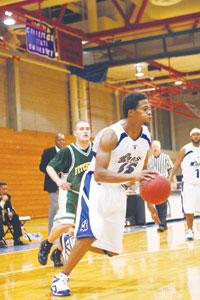College Drinking

Illustration by Gardi Arroyo
October 23, 2007
Though it may not be legal for all students, drinking alcohol is a major part of American college life. Between September and May the majority of weekends on the average college campus are a time of keg stands and beer pong.
While most students will not run into any major problems involving their alcohol consumption there is a growing number that will. This minority has been the subject of various drinking prevention programs across the country.
According to a 2002 survey from the Journal of American College Health, 25 percent of college students say that their drinking has caused academic consequences including missed classes, poor performance on papers and tests, and overall lower grades. Problem in class are not where the consequences stop, many times there are more serious side effects.
In a 2005 survey from the Annual Review of Public Health, it was found that 599,000 students between the ages of 18 and 24 were unintentionally injured while under the influence of alcohol. In 2002, the Journal of Studies on Alcohol reported 400,000 college age students said they had unprotected sex, dramatically raising their risk of pregnancy and sexually transmitted infections.
College is a stressful environment for anyone. Newly independent, college students find themselves making serious adult decisions and having to face the consequences of those decisions. The pressure of college can get to most anyone and the excessive consumption of alcohol only exacerbates the problem. Between 1.2 and 1.5 percent of college students said that they had tried to commit suicide due to drinking or drug use in 1998, according to a report titled “Alcohol and Drugs on College Campus.”
In September of 2004 the problem of college drinking was made apparent nationwide when five students in four states died as a result of excessive drinking. Samantha Spady, a 19 year old, was the first to die in a Colorado State University fraternity house. Just 12 days later and a little more than 60 miles away, 18-year-old Lynn Gordon Bailey was found dead in a fraternity house at the University of Colorado.
The epidemic did not stop there, as Thomas Ryan Hauser, 23, Blake Adam Hammontree, 19, and Bradley Barrett Kemp, 20, all died within the next few weeks. What had been a problem to some became a problem to all.
Nearly 1,700 college age students die each year from alcohol related injuries, including motor vehicle accidents, according to the Annual Review of Public Health.
To prevent such news from hitting UMass Boston, the first step is recognizing that there is a problem. If alcohol consumption causes a failure to fulfill responsibilities at school, work, or home, or you find yourself in dangerous situations like driving while intoxicated, there is likely a problem that needs to be addressed.
On campus, the UMass Boston Counseling Center is the best source for help when trying to deal with dependency on and over-consumption of alcohol. Most programs for dealing with alcohol abuse will include attending Alcoholics Anonymous meetings.
Alcoholics Anonymous is an organization that describes itself as a “worldwide fellowship of men and women who help each other stay sober.” The support of others in similar situations is viewed as an invaluable asset in recovery. A number of local Alcoholics Anonymous meetings can be found with the help of the Counseling Center or by visiting their website at www.aa.org.

























































